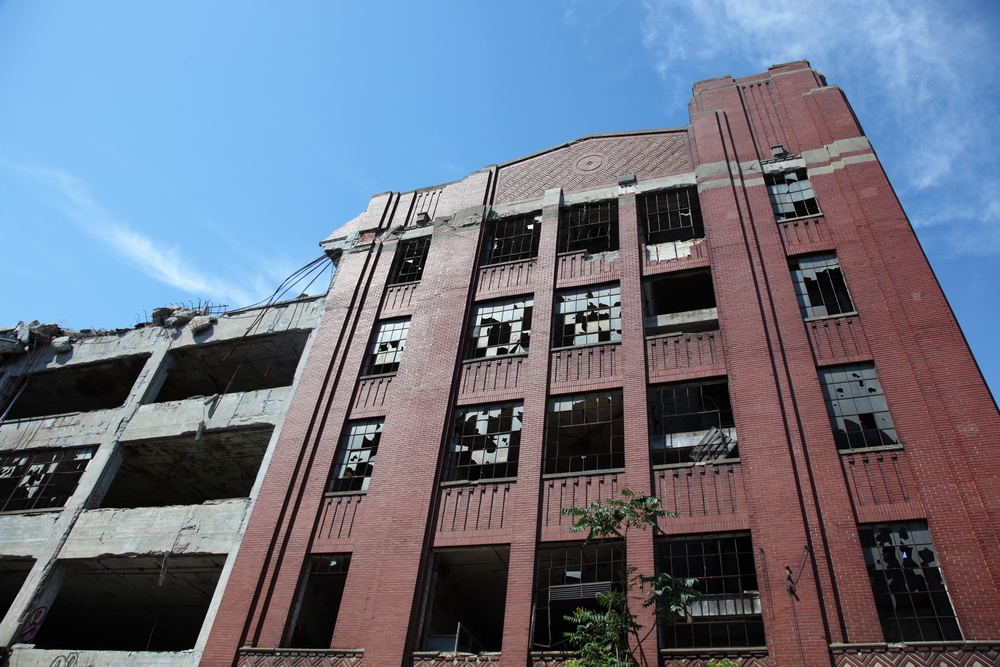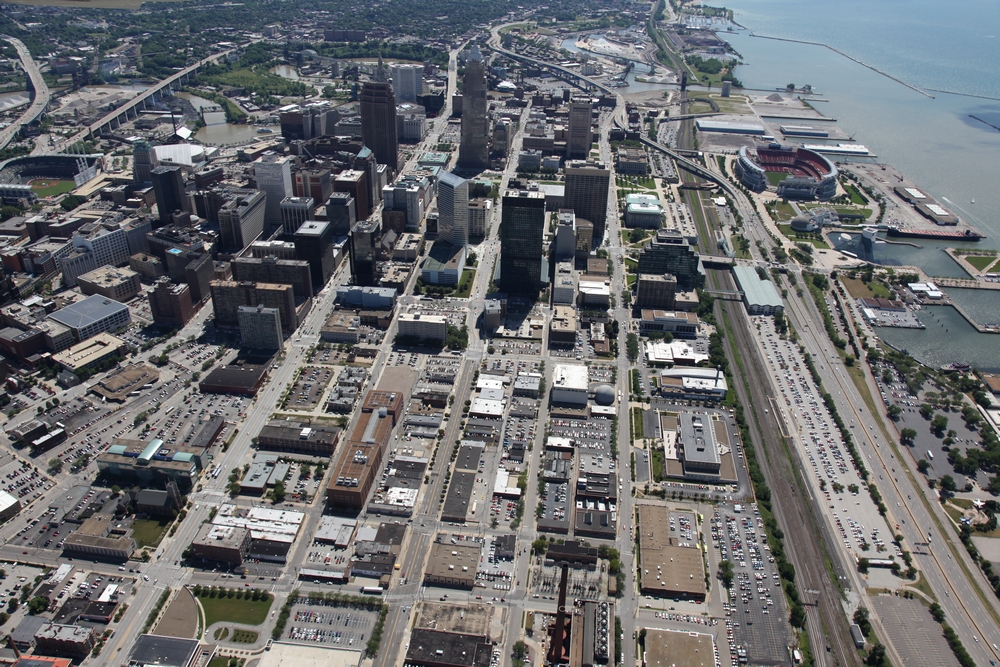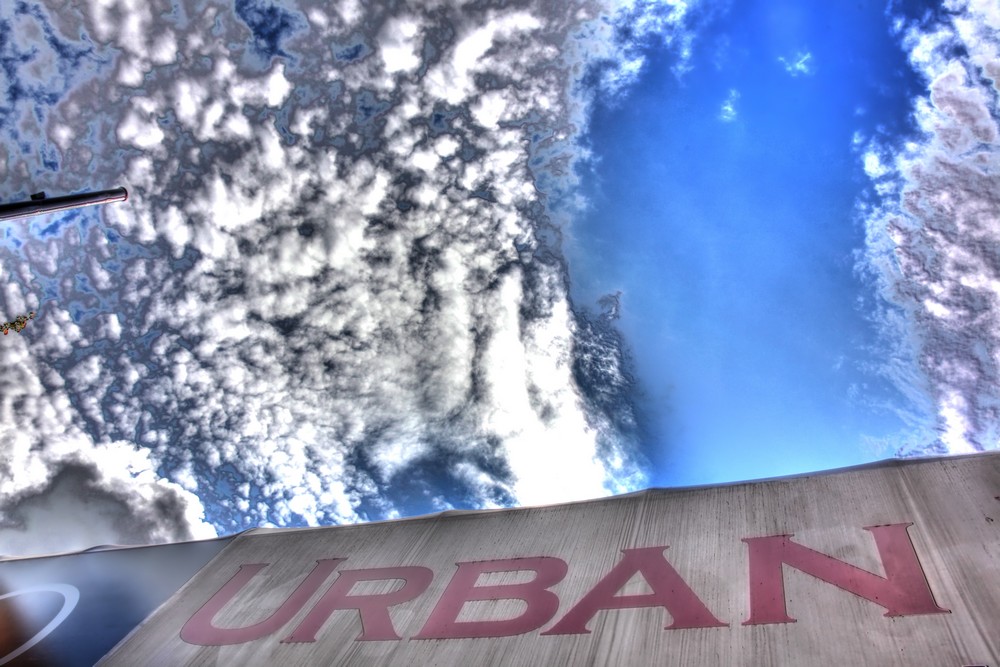


Urban Studies 200 / Geography 250
Welcome to the City!
Cities represent the very best and the worst of the human condition. E. Barbara Phillips, one of the most insightful urbanists of our time, opens her important book City Lights with an imaginative suggestion:
"If you close your eyes and think about the city, what do you visualize? Sleek skyscrapers? Great libraries and good food? New ideas and world-changing inventions? Walt Whitman's Brooklyn Bridge and Gustav Eiffel's tower? Rappers rhyming? Fans cheering for the home team? Trendy fashions and diverse pleasures? Or do you envision a bomb blast in Oklahoma City and a poison-gas attack in Tokyo? Short-tempered drivers honking in gridlock? People lining up at the soup kitchen? Heatless rooms with rats and roaches? Smells of Lysol and body sweat at homeless shelters? High schoolers hiding guns in the hallways? Chilling crimes and petty irritations? People sleeping, perhaps dying, on the snowy streets of Stockholm and St. Paul? Children living in tenements and tracts, dumpsters and vans? Or estates with signs threatening 'Armed Response'?
Perhaps your vision encompasses both urban glories and dilemmas." (E. Barbara Phillips, 1996. City Lights: Urban-Suburban Life in the Global Society, Second Edition. New York: Oxford University Press, pp. 3-4).
Phillips' writing hits you right in the face with all the good, bad, and ugly, doesn't it? Personally, I'm an optimist -- and so I hope you think of the urban glories, all the joys, excitements, and energies of the city, and that the negative images recede into the background. What is clear, however, is that cities help to magnify, concentrate, and intensify whatever is happening in society.
Urban studies is the field devoted to understanding this process. It is interdisciplinary, which means that there are exciting discussions about cities among all sorts of people and scholars -- historians, sociologists, geographers, political scientists, anthropologists, economists, planners, architects ... the list goes on. Indeed, the range of people who study urban topics is so vast, and the words used by different experts are so varied, that it sometimes seems impossible to identify where urban studies begins and where it ends.
All definitions of academic subjects are, to some degree, artificial ways of simplifying the beautiful complexity of inquiry and learning. But if we absolutely had to come up with a clear definition of urban studies, what would it look like? Three definitions are most useful.
First, urban studies can easily be defined by its object of inquiry -- people, places, and processes found in cities. So our subject might be said to focus on what's happening in the four hundred cities in the world with populations of at least one million, or perhaps just the nineteen "city-regions" with more than ten million people. Yet other questions immediately appear: does urban studies include suburban areas, places where "anti-urban angst" often prevails? Does it consider rural areas that are deeply shaped by their interactions with big cities? (I respond to these questions with an enthusiastic 'yes,' but not everyone agrees.)
Second, the field can be defined by its approach. Urban studies is a vibrant and rich blend of theories and methods drawn from a variety of formal disciplines. But all of these theories and methods are bound together by the attempt to understand multi-faceted phenomena in and of the city. This means that urbanists approach their work by using whatever tools seem to work best for the specific question at hand. That sounds like a statement of the obvious, and indeed it is. But the subtle point is this: because cities are multi-faceted, complex, and defined by difference or even conflict, then the approach used by urban studies researchers necessarily has these features as well. Beware of anyone who tells you that There is One Right Way to Study Cities.
Another complication is that the goal of understanding cannot be divorced from the desire for action, for progressive change to improve cities and urban life. Consider how Richard LeGates and Frederic Stout survey the field:
"'Urban Studies' is the term commonly used to refer to the academic study of cities. Knowledge about cities generated by social scientists and others is sometimes taught in a single program, sometimes dispersed among academic departments. The goal of these courses is primarily to teach students to understand cities, only secondarily to empower them to change cities. On the other hand, professional city planning, town planning, and regional planning courses explicitly train students to work as city planners. Often planning courses are taught as part of graduate or undergraduate professional degree programs; sometimes as part of geography, architecture, or departments in the social sciences. ... We feel planning and policy should be informed by understanding and that studying urban planning and policy can enhance understanding." (Richard T. LeGates and Frederic Stout (2003). "Introduction." In LeGates and Stout, editors, The City Reader, Third Edition. New York: Routlege, 1-5, quote from pp. 2-3.)
A third way of answering this question is a bit more realistic, and perhaps more honest as well. Our field is defined in large part by the actual scholarly activities of its protagonists. And so things like circumstance, context, history, and personalities matter just as much as abstract principles, theories, and definitions. As one illustration, consider the circumstances around the birth of perhaps the most prominent journal in the field, Urban Affairs Review. The journal was established in 1965 by the co-founder and president of Sage Publications, "during days of urban unrest, protest over the Vietnam war, and a growing consensus that the condition of cities, in the United States and elsewhere, demanded concerted attention." Sara Miller McCune, the publisher, was concerned at the time "that publications in the social sciences did not actively reflect the urban world -- they didn't cross disciplinary lines to study what was fully happening in, say, cities." Miller McCune also launched a series of ambitious "Annual Reviews" that gradually became a "type of virtual community of interdisciplinary scholarly study directed at social critique and action" as well as a deep concern for the intricacies of public policy. (Sallie A. Marston and David C. Perry (1999), "From the Series Editors," in Robert A. Beauregard and Sophie Body-Gendrot, editors, The Urban Moment: Cosmopolitan Essays on the Late-Twentieth Century City. Thousand Oaks, CA: Sage Publications, ix-xii, quotes from p. x, p. xi.)
As noted above, however, all disciplinary boundaries and definitions are somewhat artificial. My own bias is to approach urban studies less as an "object" and more as a lens -- a way of seeing the world from an 'urban' perspective. I have little doubt that this perspective will become more widespread and more important: a few years ago, global population estimates suggested that for the first time in human history, an outright majority of the world's people lived in urban areas. For the forseeable future, nearly all of the world's projected population growth will take place in urban areas. In many ways, therefore, the general questions and challenges for human civiliization are becoming distinctively urban questions and challenges. So we have a lot of fascinating and important things to explore...!
Above: Downtown Vancouver, June 2008; Below: Abandoned Packard Plant, Detroit, Michigan, July 2010 (Elvin Wyly).

CopyLeft 2012 Elvin K. Wyly
Except where otherwise noted, this site is

Schedule
Below is our schedule of topics and readings. Selections you should read before class are listed on the right-hand side. On the left-hand side are lecture notes, which you can skim before class if you have time -- but this is not mandatory. We're always making lots of revisions and updates right up to the moment we walk into class, because there's always new and exciting stuff happening in urban studies! The lecture notes do, however, serve as a convenient record of the key points we covered in class. This means that you don't have to take notes in a vain attempt to capture everything: take notes to highlight the things you find most interesting, and questions and topics you wish to investigate further.
If this is your first time here, please read these terms of use.
Tuesday, September 4. UBC Imagine Day. Course web page.
Random thought: Imagine all the urban conversations that are going on in cities and neighborhoods everywhere, right now. There are so many conversations about cities and urban life. If we had a nice big fat travel budget, we could bring everyone in class to join one of the many global urban conversations happening right now. We could go to the World Urban Forum, in Naples. Or we could be at one of the World Social Forum events. (But then of course we'd have so much carbon guilt with all those airline flights...)
Thursday, September 6. Course introduction. Phillips, pp. xxiii-xxix.
Saturday, September 8. Optional Walking Tour of Vancouver.
Tuesday, September 11. Paths to understanding the city. Phillips, pp. 3-18.
Thursday, September 13. Disciplines and the city. Phillips, pp. 37-44, and then any one of the discipline subsections between pp. 45-65.
Tuesday, September 18. Social science, public debate, and urban studies. Phillips, pp. 74-95.
Thursday, September 20. Ancient and preindustrial cities. Phillips, pp. 106-115.
Tuesday, September 25. Contemporary urbanization and global city-systems. Phillips, pp. 148-159, or Scott (2011).
Thursday, September 27. Defining urban community. Phillips, pp. 166-187.
Tuesday, October 2. Midterm examination.
Thursday, October 4. Community in the exploding metropolis. Phillips, pp. 196-203.
Optional: If you have time, read Martin, Deborah G. (2011). "Urbanization, Justice, and Place." Urban Geography, 32(4), 484-487. Wow, blows your mind, doesn't it? "For a truly spatial justice, we need to account for place identity such that 'local' claims are immediately and insistently situated as always globally related and produced." (p. 486). Powerful and eloquent! What do you think? Here's a note I sent to Deb after reading her paper. More about Professor Martin's work here.
Tuesday, October 9. Suburbia. Read Phillips, pp. 218-226, before class.
This is what we will be doing in class.
Optional: If you have time, check out Jamie Peck, Elliot Siemiatycki, and Elvin Wyly (2012). "Vancouver's Suburban Involution." Vancouver, BC: Department of Geography, University of British Columbia. Do you think I went too far when I suggested the phrase "Strata Stalingrad?"
Thursday, October 11. Race, ethnicity, and urban identities. Phillips, pp. 300-312.
Tuesday, October 16. Immigration and the metropolis. Phillips, pp. 261-270, 283-285.
Thursday, October 18. Guest lecture: "Louis Wirth in the age of the screen," by Samuel Johns. The video of Sam's lecture is here.
Tuesday, October 23. Class and the city. Project submission date. Phillips, pp. 341-359.
Optional: If you have time, check out Smith, Neil (2000). "What Happened to Class?" Environment and Planning A 32(6), 1011-1032. As I type this, I'm sitting in a restaurant in New Jersey, a day after an extraordinary conference at Rutgers University, "Representing the City: Technology, Action, and Social Change." I'm fighting back a few tears, because a friend and mentor Neil Smith died three weeks ago; many of the people at this conference knew Neil well, and worked closely with him. So many cities. So. Many. Stories. Neil devoted his work and his life to understanding the meanings of social class and inequality in an urbanizing world. See Tom Slater (2012). "Rose Street and Revolution: A Tribute to Neil Smith." Edinburgh, UK: Department of Geography, University of Edinburgh. I learned of Neil's passing while I was working on a tight deadline for an editor who had asked me to provide a commentary on an article diagnosing the U.S. housing crisis; so I kept writing as the tears fell on the yellow pad of paper, and I decided to open the essay with that crucial question he asked to introduce us to the new millennium: "What happened to class?" See Elvin Wyly (forthcoming). "Why [Not a Right to] Housing?" Housing Policy Debate.
A few notes on "Last Train Home" are here.
Thursday, October 25. First. Nation. City. Read: Evelyn J. Peters (2001). "Geographies of Aboriginal People in Canada." The Canadian Geographer 45(1), 138-144. Optional: if you have free time on Monday, November 5, you might be interested in this!
Tuesday, October 30. Nature's Metropolis. Read the first three pages of Erik Swyngedouw (2006). "Circulations and Metabolisms: (Hybrid) Natures and (Cyborg) Cities." Science as Culture 15(2), 105-121.
Warning! The schedule this week is tentative, because CUPE 2278 may be taking job action, and the UBC Administration will swiftly deploy the principle of "Dream Up, Blame Down" (see Phillips, 2009, p. 348) to divide the loyalties of undergraduates, graduate students, teaching assistants, staff, and faculty. When I checked email today, Sunday, October 28, I received an official email from UBC informing me of the University policies on job actions, along with a link to http://www.jobaction.ubc.ca. Following that link led me to a declaration that "Members of the university community are entitled to exercise a decision of conscience not to cross a legal picket line, but must provide notice in advance." The website also indicates, "Faculty and staff must provide notice to their head, manager, or supervisor before Sunday, October 27 at 3 a.m." Um, er, well ... Sunday is October 28, and do you really expect us to be checking email twenty-four seven? Three a.m.? Really?
Updates: Charles Menzies (2012). "The Longer the Picket Line, the Shorter the Strike." The Ubyssey, October 30; and Laura Rodgers (2012). "TAs Start Job Action with a One-Hour Picket Outside the Jack Bell Building." The Ubyssey, October 30.
Bottom line: I don't know what will happen this week. If our TAs establish picket lines, I will honor them, but I'll do everything in my power to prevent that from causing problems for you. In other words, I will attempt to make it to campus on Tuesday, and I will attempt to be at our regular meeting place at the appointed time. But if picket lines are established, it is not known exactly what will be on the agenda. Optional: See Michael Bernard-Donals (2009). "Solidarity Forever: Why TA Unions are Good for Writing Programs." College Composition & Communication 61(2), 437-451.
Thursday, November 1. Nature's Metropolis (continued). Sorry, I ran out of time on Tuesday, so today we'll finish up our discussion of Nature's Metropolis. We probably won't have time for the "Frameworks of urban governance" lecture. My apologies. Here's last year's version, but this is totally optional reading. Some students, and one of our Teaching Assistants from previous years, however, have told me that the "frameworks" material was pretty boring, and although I disagreed, the breaking-news events out of New York and New Jersey in the last few days provide an irresistible opportunity to extend our discussion of nature-society relations, don't they?
Tuesday, November 6. City political machines, I: History and theory. Phillips, pp. 464-476.
Thursday, November 8. Community power. Phillips, pp. 493-503.
Tuesday, November 13. City political machines, II: Case study, Harold Washington vs. the Chicago machine. Project submission date.
Thursday, November 15. Transit World City. The reading for today is optional; see the suggestions on the discussions page.
Note: Our originally scheduled topic for today was "The Economist's City," but our dedicated Teaching Assistants have informed me that many students are interested in more information 1) about urban and regional planning issues, especially transportation and public transit, and 2) cities beyond North America. So I'm writing a new lecture to respond to these requests. The opportunity cost -- aha, a key insight of urban-economic thinking! -- is that we won't have time to cover the economist's city. Totally optional: if you want to see my urban economics notes, they are here. These notes go well together with a reading of Phillips, pp. 617-626, and also with the film Inside Job.
Tuesday, November 20. Guest lecture: "A Peace Walk Through Megalopolis," by C.S. Ponder. Read before class: Deborah Cowen (2006). "Hipster Urbanism." Relay, September/October, pp. 22-23. The slides for Sage's talk are here.
Thursday, November 22. Guest lecture: Paige Patchin, "Urban Coloniality: Stories of Violence and Militarization from Latin America." Highly recommended readings, if you have time: Ananya Roy (2011). "Slumdog Cities: Rethinking Subaltern Urbanism." RInternational Journal of Urban and Regional Research 35(2), 223-238, and Simon Springer (2011). "Violence Sits in Places? Cultural Practice, Neoliberal Rationalism, and Virulent Imaginative Geographies." Political Geography 30(2), 90-98.
Tuesday, November 27. Guest lecture: Emily Rosenman, "Demolishing the City to Save it? Destruction in the Name of Renewal in US Cities." Emily's slides are here.
Thursday, November 29. Conclusions and reflections: An urban future. Phillips, pp. 675-678.
elviNotes™
Date; Topic; Read Before Class.
Davie Street, Vancouver, August 2012
Urban Events & Announcements
(Optional!)






























